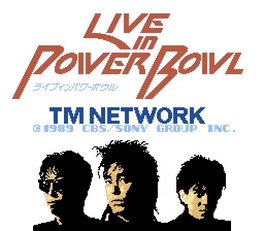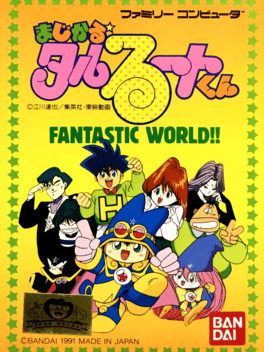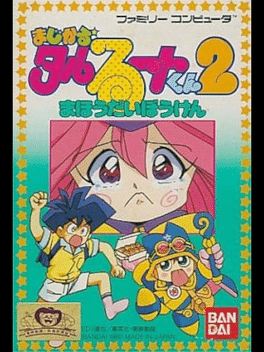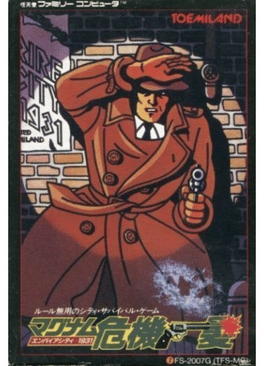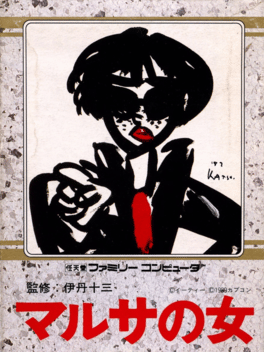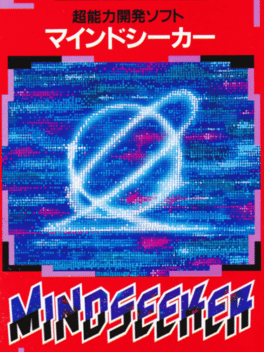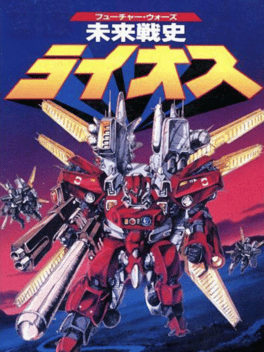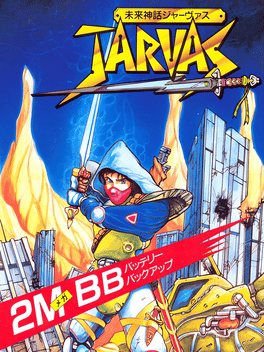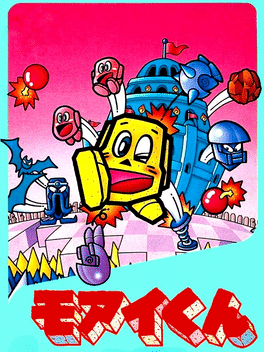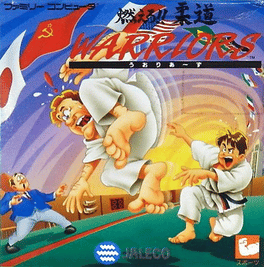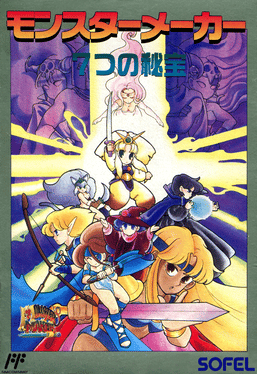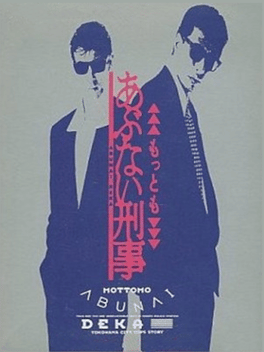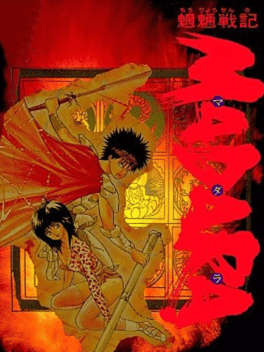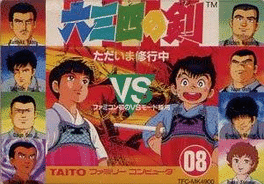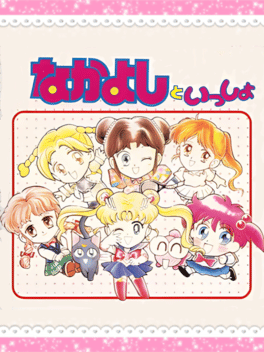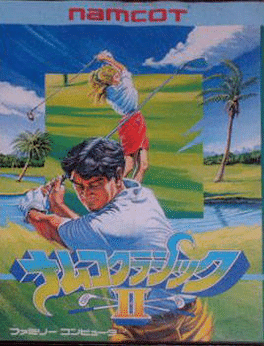Most Popular Family Computer Games - Page 44
-
TM Network: Live in Power Bowl
1990
TM Network: Live in Power Bowl is a Japanese-only Nintendo Family Computer game featuring the J-Pop group TM Network. The song used as the background music is "Come On Everybody" from their album Carol - A Day In a Girl's Life 1991 -
Lost Word of Jenny: Ushinawareta Message
1987
Jenny’s on her way to the theater to practice for an upcoming role. Her script gets stolen though and has to track the pages down in different stages which are entered through the hub world. Once you collect a key and memorize letters and numbers, you go to the theater and use them to unlock the combination lock. Jenny has 2 abilities: punching and kicking, and after picking up powerups, throwing stars and bug spray -
Magical Taluluto-kun: Fantastic World!!
1991
Fifth grader Edojou Honmaru is one of the most trodden-upon losers in his class, until he meets Magical Taluluto-kun. Taluluto's powers help him deal with all his hardships, such as girls, bullies, and numerous other challenges. -
Magical Taluluto-kun 2: Magical Adventure
1992
To save the kidnapped Iyona-chan, Talututo-kun teams up with Mimora and Honmaru and go on a magical adventure. Each character has their own special abilities, so they must work together to overcome the challenges they face. -
Magnum Kiki Ippatsu: Empire City 1931
1988
In Empire City: 1931 which is set in 1931 you are a federal agent that has to eliminate all criminal activities in New York City. You must hunt the criminals down and shoot them one by one. To locate a criminal you just have to follow the arrow on the left or right of the screen. Killing criminals is done by moving the cross hair over them. A countdown timer will start counting down if a criminal starts shooting at you. You must kill the criminal before the timer reaches zero or you'll loose a life. New bullets can be collected by shooting at the bullet boxes that regularly appear in the game as other useful objects. The criminals sometimes take hostages for protection. Rescue these hostages for additional points. -
Marusa no Onna
1989
Marusa no Onna
1989
Marusa no Onna is an adventure game developed by Capcom based on the movie of the same name where you investigate businesses to catch tax evaders. -
Majin Eiyuu-den Wataru Gaiden
1990
Majin Eiyuu-den Wataru Gaiden is a Role-Playing game, developed by West One and published by Hudson Soft, which was released in Japan in 1990. -
Mindseeker
1989
Mindseeker
1989
Mindseeker is an Adventure game, developed and published by Namco, which was released in Japan in 1989. -
Mirai Senshi: Lios
1989
Mirai Senshi: Lios
1989
Future Wars: Lios is a turn-based strategy game developed and published by Pack-In-Video, the same developers who brought us Die Hard (NES). In this game, you play as Cecilia and her army of robots. You must make it to Goinkia's castle and stop him from taking over. To do this, you must travel the overworld and select a location. Once you do, you must take out the enemy's commander robot and then the enemy's base. Then you will win and will be allowed to progress. Sometimes defeating enemies unlocks new weapons. -
Mirai Shinwa Jarvas
1987
Mirai Shinwa Jarvas
1987
Mirai Shinwa Jarvas is a RPG developed and published by Taito. It is about a man named Jarvas who travels back in time from the future to conquer the world of the past and become the leader. You must get people to join your side and take over enemy castles. This game is generally considered pretty bad by most. When you begin the game, you are given no information about where you are and where you should attempt to go. Once you find a town, you must join a guild. You can only increase your level by returning to the guild once you have accumulated enough experience. -
Moai-kun
1990
Moai-kun
1990
Moai-kun is a puzzle video game developed and published by Konami for the Family Computer in Japan in March 1990. The game derives its themes from Easter Island; the player controls a sentient moai statue that must rescue other moai and escape each stage via a door before the timer expires. Although platforming elements are present, the primary challenge is to find a way to manipulate the objects in each stage to reach the distressed moai and rescue them while still leaving an avenue of escape to the exit door. -
Moero!! Judo Warriors
1992
Moero!! Judo Warriors is a Family Computer video game that was released in 1990. The box art shows competitors in an international judo tournament; flags of different countries like the Soviet Union, France, Brazil, the United States of America, and Japan are used to signify the eliteness of the virtual competition. Players must travel around the world in search of judo opponents. The player even gets to compete in the Summer Olympic Games under his discipline of judo after defeating five opponents. However, this would most like refer to either the 1992 Summer Olympic games in Barcelona, Spain because of the game release date. Nine opponents must be defeated in the Olympic Games in order to collect the gold medal. Losing some matches while winning other may result in the awarding of either the silver or the bronze medal. -
Monster Maker: 7-tsu no Hihou
1992
Monster Maker: 7-tsu no Hihou is a Role-Playing game, developed and published by Sofel, which was released in Japan in 1991. -
Mottomo Abunai Deka
1990
Mottomo Abunai Deka
1990
Mottomo Abunai Deka is an Action game, developed by Micronics and published by Toei Animation, which was released in Japan in 1990. It is based on a Japanese movie released in 1989 with the same name. This game and the movie are both related to the late 1980s detective TV show, Abunai Deka. -
Mouryou Senki Madara
1990
Mouryou Senki Madara
1990
Mouryou Senki Madara is a Role-Playing game, developed and published by Konami, which was released in Japan in 1990. -
Musashi no Ken: Tadaima Shugyou-chuu
1986
Musashi no Ken: Tadaima Shugyou-chuu is a 1986 video game software developed and published by Taito exclusively in Japan. It is based on a Japanese sports manga series written and illustrated by Motoka Murakami that focuses on kendo, simply titled Musashi no Ken. The gameplay and design in the one-on-one fighting parts resemble Taito's other fighting game, Great Swordsman, especially its kendo mode. The game's plot is about the son of two Kendo champions named Musashi. He strives to become as great at Kendo as his parents. The entire story centers around the world of Kendo and its up and coming competitors. The anime is broken up in to two parts. The first part follows Musashi's early years in grade school while the second part follows his high school years. In the first episode, Musashi befriends an Akita puppy who is by his side throughout the series. -
Nagagutsu wo Haita Neko: Sekai Isshuu 80-nichi Daibouken
1986
Nagagutsu wo Haita Neko: Sekai Isshuu 80-nichi Daibouken is a 1986 video game based on the third film of The Wonderful World of Puss 'n Boots that was released exclusively in Japan for the Family Computer. Four years later, the game (with several modifications) was released in North America under the title Puss 'n Boots: Pero's Great Adventure. The main character is the Puss in Boots character from the tale; a cat named Pero (Toei Animation's mascot) He is also known as 'Perrault' in the game, as that was the name of the original author of the Puss In Boots story; Charles Perrault. He is known for helping an impoverished master attain wealth through the use of trickery. -
Nakayoshi to Issho
1994
Nakayoshi to Issho
1994
Nakayoshi to Issho is an Adventure game, published by Yutaka, which was released in Japan in 1993. -
Namcot Classic
1988
Namcot Classic
1988
Namcot Classic is a golf game developed by Namcot and published for the Famicom in 1988. The game features Round Play, which you can use to practice the course in the game or compete with friends, or Tournament mode, where you play against a computer opponent in an effort to win a large amount of prize money. The game was also released for the Game Boy in 1991. The Game Boy version features a different course but is very similar in many respects. In 1996, that version was also included in the compilation title, Namco Gallery Vol. 1. -
Namcot Classic II
1992
Namcot Classic II
1992
Namcot Classic II is a Sports game, developed by TOSE and published by Namcot, which was released in Japan in 1992.
